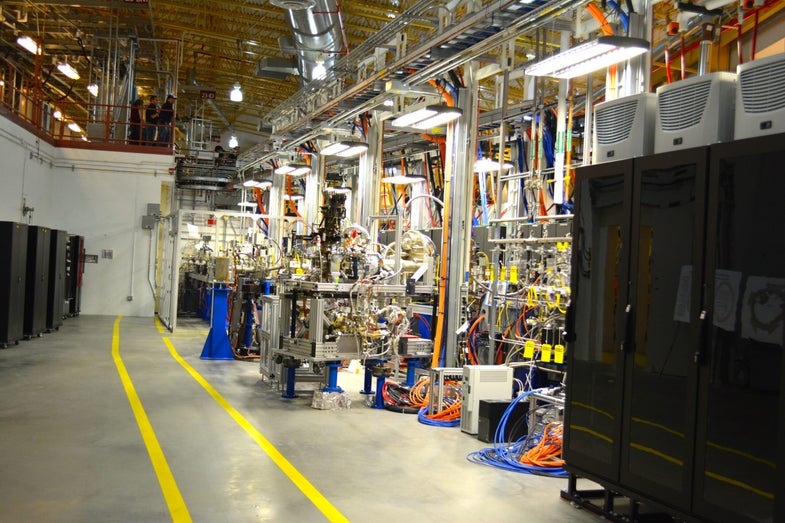Although the National Synchrotron Light Source (NSLS-II)–what the U.S. Department of Energy hails as the “most advanced synchrotron facility in the world“–was officially dedicated last Friday at Brookhaven National Lab, scientists are already hard at work inside. Academic and corporate researchers alike will use the facility in the coming years to develop next-generation batteries, materials, and medicine. NSLS-II is a machine designed to make insanely insanely bright x-rays, as well as ultraviolet and infrared light, by zooming electrons in a circle at speeds that approach the speed of light and then bending them. The resulting beams are then harnessed by scientists to study anything from proteins to space dust, making the synchrotron a sort of super-microscope. Tour the $912-million facility in the gallery above.
NSLS-II
Scientists have high hopes for Brookhaven National Lab’s National Synchrotron Light Source
Dedication Ceremony
Crowds gathered inside the NSLS-II facility to hear dedication speeches on Friday, February 6, 2015
Tour of Electron Ring
NSLS-II Project Director Steve Dierker, Secretary of Energy Ernest Moniz, and BNL Lab Director Doon Gibbs, walk inside the electron storage ring tunnel of NSLS-II. The electron storage ring is where the beam of electrons moves in circles until prompted (“wiggled”) to emit the x-rays and other forms of light that come out along the beam lines.
CSX Beam Line
Part of the Coherent Soft X-ray Scattering (CSX) beam line at NSLS-II, one of the first beam lines to become operational. This beam line will use x-rays generated from the electron ring to look at the next generation of electronics and electronic materials
NSLS-II
A view of the facility from above. The entire thing has a circumference of half a mile.
Trike
Because the facility is so huge, researchers have the option of getting around on trikes like this–the three wheels are more stable than bikes, and it comes built in with a small cargo space on the back.
Magnets
A few of the 843 magnets (brightly colored) that are all aligned to within 30 microns of each other (less than the width of a thin sheet of aluminum foil). The magnets sit on top of 150 steel girders, each stretching 14 feet long and weighing 8 tons.
Robot Arm
At one of the beamlines, researchers use a robot arm (red) to load and switch out samples quickly and efficiently
Robot Emergency Stop
The button used to halt the robot arm used at one of the beamlines. We wanted to press it, but did not.
Sample
The vastness of the facility can overshadow the fact that this massive system will study some of the smallest things on earth. A scientist holds one of the sample containers that will be studied at one of NSLS-II’s beamlines.










